I’m going to do a dual book report on two of the three books I bought at the book signing at ABC Books last month because they have some similarities that I’ll talk about at the end.
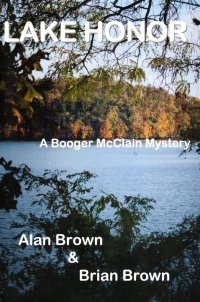 After reading a chonking Stephen King book and a shorter palate cleanser on Descartes, I thought, wouldn’t it be something if I read the author-signed books from ABC Books soon after buying them instead of years later? So I picked up what is the first chronologically in the series, although the author I met (the son of the father and son duo) says you can read the three books in any order, but I went with the first one first.
After reading a chonking Stephen King book and a shorter palate cleanser on Descartes, I thought, wouldn’t it be something if I read the author-signed books from ABC Books soon after buying them instead of years later? So I picked up what is the first chronologically in the series, although the author I met (the son of the father and son duo) says you can read the three books in any order, but I went with the first one first.
The book deals with a fictionalized version of a real case: In the 1970s, two young men were found floating in the fountain pond on the School of the Ozarks, now the College of the Ozarks, campus. They were fully clothed, and the authorities pretty quickly said it was death by misadventure or drugs, maybe, and kind of swept it under the rug. A student at the school ends up re-evaluating his attendance there and quits, only to come back a year later to interview people about the killings for a story. He meets a private investigator, Booger McClain, who tells the story. So this book has two frame stories, really: In the present day, the former student is thinking about the case and comes back to town; and the second, which dominates the book, is the private investigator telling the story of his investigations along with some scenes with the principals in the action, including the boys who died. So the narrative takes place in real time, sort of, as events unfold, but it’s partially told by a private investigator a year later. And the now frame around the whole thing really doesn’t add anything.
The book, like the one that follows, has some typos (altar is spelled alter a couple of times) and a couple of little problems that factchecking would solve, like:
In fact, when I first watched the movie “Halloween,” and saw the mental hospital where Jason escaped, I immediately thought about that dorm.
C’mon, man, we can tell our Jason from our Michael Myers, ainna? We can even spell Myers right on the first try. You know, a dilligent fact-checker would have found this, but when writing and editing our own work, we check on things we’re uncertain of, but not the things we know (that just ain’t so). It’s always the one little throwaway that goes awry.
“Where are you staying?” he asked after a few seconds.
“The Bel Air Motel on 67,” I said.
Highway 67 runs along the eastern part of the state, not the western part, although I understand why it would be top of mind to the authors–it runs through south St. Louis County where they live (and where I once lived).
There are some other anachronisms and things that make one wonder–one of the dead young men played football for Kickapoo; I had thought Kickapoo opened in 1972, which would have made this iffy, but Kickapoo actually opened in 1971, which would make this more plausible. Coupled with the typos, though, one wonders if it was really that way.
 This Booger McClain mystery takes place in the present day, but again it deals with a crime that occurred decades ago. In this case, it’s the disappearance of three women, two recent high school graduates and a mother of one of them, in 1992. This story still resonates in the Springfield community–every so often, it pops back into the news when it is featured on a podcast or in a book such as this one. My beautiful wife informed me that she had already bought this book during its initial publicity burst. She was in Springfield when this happened (and an attractive young woman), and she went to school with the two recent graduates who disappeared. So this story resonates with her, and it’s one of the top two defining crimes that really shook Springfield (the other was the 1904 lynching on the square for which Springfield is only now seemingly emerging from self-flagellation).
This Booger McClain mystery takes place in the present day, but again it deals with a crime that occurred decades ago. In this case, it’s the disappearance of three women, two recent high school graduates and a mother of one of them, in 1992. This story still resonates in the Springfield community–every so often, it pops back into the news when it is featured on a podcast or in a book such as this one. My beautiful wife informed me that she had already bought this book during its initial publicity burst. She was in Springfield when this happened (and an attractive young woman), and she went to school with the two recent graduates who disappeared. So this story resonates with her, and it’s one of the top two defining crimes that really shook Springfield (the other was the 1904 lynching on the square for which Springfield is only now seemingly emerging from self-flagellation).
Like Lake Honor, the book centers on a writer coming to Booger McClain to the story of his investigation. McClain has a war room with evidence in a seemingly abandoned warehouse on the north side of town, and he lets the writer review it. Someone tries to break into the evidence room, though, which leads McClain to believe he’s close to solving the mystery. So this book has a little more action in it, but it’s very similar to Lake Honor in its storytelling and resolution.
I flagged a couple of things in this book as well.
“Pull into the next parking lot,” the man in the back ordered his partner. That parking lot was a 24-hour Wal-Mart grocery a few miles from the Levitt home.”
It’s a quibble, but in those days, the Walmarts were Walmarts; the Walmart Neighborhood Market was a ways off, and the Walmarts of the day were more department stores. It’s only later that they would expand their grocery offerings.
“I was a sheriff for a time in Branson back in the 60’s.”
McClain would not have been a sheriff for Branson. Sheriff is a county office; he would have been Taney County Sheriff, which is an elected position by the way. But city folk can be forgiven for thinking that sheriff is what you call the police in a small town.
Again, some anachronisms and errata that one might overlook if it weren’t for the typos.
Also, I recently read a post on Mad Genius Club about whether authors were including the Malingering Unpleasantness in their works; this book mentions the Wuhan Flu conditions, as a business slowdown gives the writer in the story time to come to Springfield to interview McClain. It’s mentioned, but not doted upon.
At any rate, the books were very similar in the following:
- They’re both rather expository. The stories are told, often by McClain, rather than experienced or shown. Which is to be expected. Although both have elements of contemporary action where McClain is not present, but even those passages are telling more than vivid creations of a scene.
- Which is probably explained a bit by the fact that the crimes occurred decades before the actual setting of the books. Lake Honor has more of recreations of scenes contemporaneous to the crime; Gone in the Night has one, and it’s one that thwarts McClain’s assumptions of the case.
- Neither book “solves” the case. Lake Honor alludes to possible solutions. Death in the Night offers a section where McClain presents his theory of the case–which, as I mentioned, is counter to the one contemporaneous scene (quoted above, where the perpetrator has a partner, whereas in Booger’s theory of the case, a suspect acts alone).
- The authors Asimov themselves into the story. In the first, “Alan” is Alan, the author. In the second, the writer is “Brian,” the author, and the biographies of the characters in the story kind of match the authors’ stories. I’m not sure why to choose such a frame–perhaps to keep the writing interesting for the authors themselves?
- In both books, some information is repeated, almost in the same words, as though they were in the process of moving it, but forgot to remove it from the initial location in the narrative.
That said, I found the books readable and a bit compelling–I read them right after each other, and I started the third book, which is an original, already. So let that be my endorsement as it is: The books are clearly self-published, with the typos to attest, but they’re not the worst of the self-published I’ve seen and put down.
The books affected me so much that when I saw the headline Branson family hires high profile private investigator to join search for missing son, I immediately thought of Booger McClain.
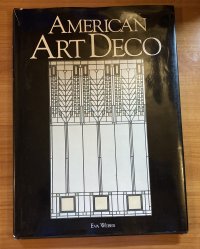 This is a large-sized Crescent book covering the design styles of art deco which were early 20th century design and architectural movements around the world, but notably the United States. I say styles and were in the plural because really Art Deco includes subdesign styles called the Aztec, zigzag, and streamlined styles. The book breaks things up into sections on Architecture, Furniture, Art, and whatnot. Each chapter has a page of text that name drops people who popularized the style, and then includes photos and illustrations.
This is a large-sized Crescent book covering the design styles of art deco which were early 20th century design and architectural movements around the world, but notably the United States. I say styles and were in the plural because really Art Deco includes subdesign styles called the Aztec, zigzag, and streamlined styles. The book breaks things up into sections on Architecture, Furniture, Art, and whatnot. Each chapter has a page of text that name drops people who popularized the style, and then includes photos and illustrations.


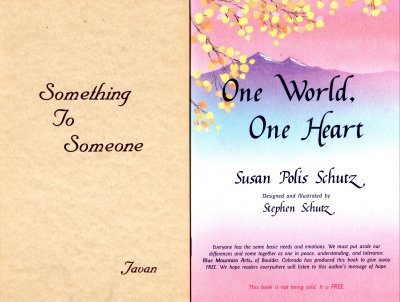 These are two more chapbooks, or short books of poetry, that I bought bundled
These are two more chapbooks, or short books of poetry, that I bought bundled 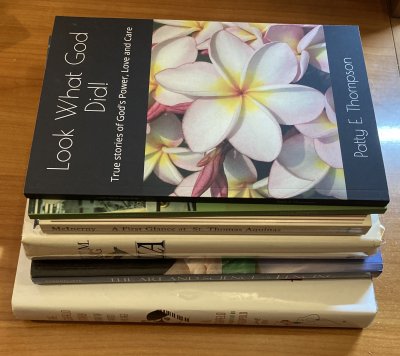
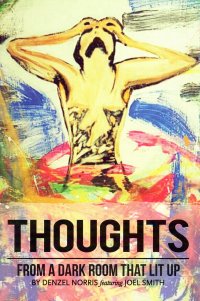 This book is from Faith over Fear Productions, so I expected some faith-based poetry, but there’s nary a mention of Jesus in it. Instead, it’s a collection of street poems, almost raps, dealing with relationships and whatnot. The poems have short lines with a bunch of chatter and not the distinct imagery but rather rhythmic, sometimes, abstract conversation. Less formal than grandmother poetry or
This book is from Faith over Fear Productions, so I expected some faith-based poetry, but there’s nary a mention of Jesus in it. Instead, it’s a collection of street poems, almost raps, dealing with relationships and whatnot. The poems have short lines with a bunch of chatter and not the distinct imagery but rather rhythmic, sometimes, abstract conversation. Less formal than grandmother poetry or 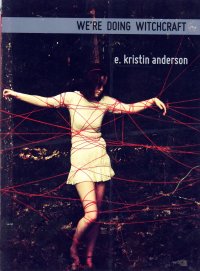 I got this book from one of the bundles of chapbooks I bought at the
I got this book from one of the bundles of chapbooks I bought at the 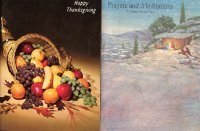 These two slim volumes came in the bundles of chapbooks that I bought at this autumn’s
These two slim volumes came in the bundles of chapbooks that I bought at this autumn’s 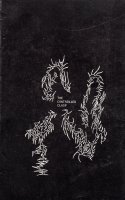 I bought this in one of the three packets of chapbooks that I got for a dollar each at the
I bought this in one of the three packets of chapbooks that I got for a dollar each at the 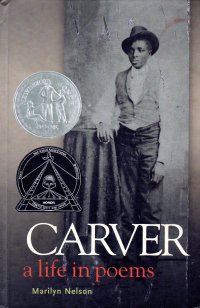 I picked up this Scholastic book to browse during a football game, and I thought, a collection of poems about the life of George Washington Carver for kids? Who needs that? Who would read that?
I picked up this Scholastic book to browse during a football game, and I thought, a collection of poems about the life of George Washington Carver for kids? Who needs that? Who would read that?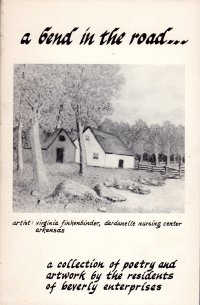 As you might know, gentle reader, I consume a lot of what I call “Grandma Poetry.” These are usually chapbooks published by older women with themes of family and God; the authors are not professional poets and probably don’t even have a magazine credit on their copyright pages. Most of it is not sublime or exhilirating; some of it is nice. If you read the collected works of a Great Poet, you’ll find their works are limited to the really, really good once in a while and maybe nice most of the time.
As you might know, gentle reader, I consume a lot of what I call “Grandma Poetry.” These are usually chapbooks published by older women with themes of family and God; the authors are not professional poets and probably don’t even have a magazine credit on their copyright pages. Most of it is not sublime or exhilirating; some of it is nice. If you read the collected works of a Great Poet, you’ll find their works are limited to the really, really good once in a while and maybe nice most of the time.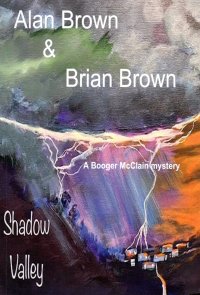 So as I mentioned when I reported on
So as I mentioned when I reported on 
 After reading a
After reading a  This Booger McClain mystery takes place in the present day, but again it deals with a crime that occurred decades ago. In this case, it’s the disappearance of three women, two recent high school graduates and a mother of one of them, in 1992. This story still resonates in the Springfield community–every so often, it pops back into the news when it is featured on a podcast or in a book such as this one. My beautiful wife informed me that she had already bought this book during its initial publicity burst. She was in Springfield when this happened (and an attractive young woman), and she went to school with the two recent graduates who disappeared. So this story resonates with her, and it’s one of the top two defining crimes that really shook Springfield (the other was the 1904 lynching on the square for which Springfield is only now seemingly emerging from self-flagellation).
This Booger McClain mystery takes place in the present day, but again it deals with a crime that occurred decades ago. In this case, it’s the disappearance of three women, two recent high school graduates and a mother of one of them, in 1992. This story still resonates in the Springfield community–every so often, it pops back into the news when it is featured on a podcast or in a book such as this one. My beautiful wife informed me that she had already bought this book during its initial publicity burst. She was in Springfield when this happened (and an attractive young woman), and she went to school with the two recent graduates who disappeared. So this story resonates with her, and it’s one of the top two defining crimes that really shook Springfield (the other was the 1904 lynching on the square for which Springfield is only now seemingly emerging from self-flagellation).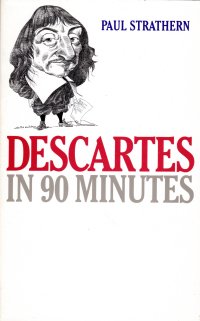 It’s been a while since I read Discourses on Method—
It’s been a while since I read Discourses on Method— You might have noticed, gentle reader, a dearth of book reports here at MfBJN over the last couple of weeks (what? Poems was
You might have noticed, gentle reader, a dearth of book reports here at MfBJN over the last couple of weeks (what? Poems was 